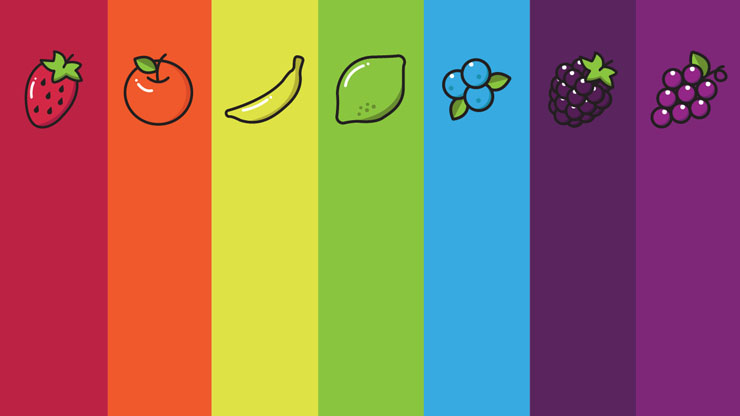Maybe you've heard the advice: Eat a rainbow every day to get a full complement of nutrients. And no, M&Ms don't count. So what is it about different colored fruits and vegetables that makes them so beneficial?
Whether you call them antioxidants, phytonutrients or flavonoids, these compounds found in plants have wide-ranging beneficial effects on our health. Scientists have identified thousands of these nutrients so far, and have only just begun to discover how vital they are to the ways our bodies function.
Every day our bodies form free radicals. These are highly unstable molecules that cause "oxidative stress," a process that can trigger cell damage, according to the National Institutes of Health. We're also exposed to free radicals from environmental sources: sunlight, air pollution, and cigarette smoke are some examples.
Oxidative stress is believed to play a role in many diseases, including cancer, heart disease, Alzheimer's, Parkinson's, and macular degeneration. While we can't stop our bodies from forming free radicals, we can fight them with antioxidants. That's where eating a rainbow comes into play, because no one fruit or vegetable contains every phytonutrient necessary to battle free radicals. Think of the rainbow as a superhero team that works together to battle free radicals.
So what colors should you be eating, and what benefits will they have? Here are some of the highlights, according to the Produce for Better Health Foundation. And remember, eating the skins of produce (if they have an edible skin) is a great way to increase your consumption of phytonutrients, vitamins and minerals, and fiber.
RED
Phytonutrient: Lycopene It's good for heart health, prostate health, and fighting cancer cells. Good sources: tomatoes, watermelons, red peppers, pink grapefruit, tomato products, strawberries, and cherries.
ORANGE
Phytonutrient: Beta-carotene It's good for the immune system, vision health, skin health, and bone health. Good sources: pumpkins, winter squashes, sweet potatoes, carrots, cantaloupes, apricots, oranges, and mangoes.
YELLOW
Phytonutrient: Beta-carotene It's good for the immune system, vision health, skin health, and bone health. Good sources: pineapples, bananas, corn, yellow lentils, and chickpeas.
BLUE/INDIGO/VIOLET
Phytonutrient: Anthocyanidin It's good for blood vessel health. Good sources: blueberries, blackberries, raspberries, figs, plums, eggplants, kidney beans, beets, red onions, and red potatoes.
GREEN
Phytonutrient: Lutein It's good for eye health, fighting cancer cells, and heart health. Good sources: broccoli, collard greens, spinach, kale, lettuce, artichokes, and Brussels sprouts.
WHITE
Phytonutrient: Allicin Though white isn't a color of the rainbow, white fruits and vegetables contain phytonutrients just like their more colorful cousins. Allicin is good for fighting infections and has anti-microbial and anti-viral properties. Good sources: cauliflower, mushrooms, onions, turnips, bean sprouts, parsnips, and butter beans.
So fill your plate with a variety of colorful fruits and vegetables every day to reap the rewards of an array of nutrients. That's like finding the pot of gold at the end of the rainbow!


